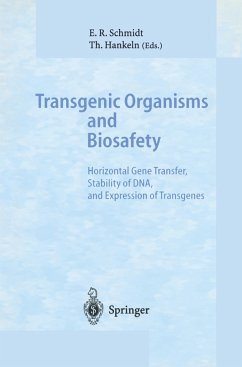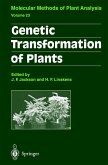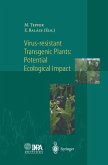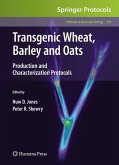In the fast developing field of gene and biotechnology the construction and use of transgenic organisms play an increasingly important role. A frequently asked question is whether these genetically modified organisms are safe if used either in laboratory containments or in the open field. This holds especiall true for the commercialization of transgenic organisms. An important aspect of "Biosafety" is the stability of transgenic DNA and the reliable expression of the transgene. A second aspect is the potential for horizontal gene transfer from transgenic to non-transgenic organisms. Most of the articles deal with these important questions. The book may thus contribute to the public debate about the biosafety of transgenic organisms by presenting original experimental data as well as theoretical considerations. Some of the contributions are useful reviews of the relevant literature. The book does not only contain academic research articles, a number of the reports are written by "practitioners" actually using gene technology in the pharmaceutical and agro-industries. Thus, the interested reader can find a broad range of information on purely academic questions as well as on problems which gene technology companies have to cope with when a transgenic organism is to be field-tested and commercialized.
Gene/biotechnology and the broad use of genetically modified organisms is rapidly developing into a commercial enterprise. In spite of the pace of scientific progress in this field, a partly emotional debate is still being carried on by the general public and on the part of the consumer about the potential risks linked to this new technology. Especially when genetically modified organisms (GMOs) are tested in the open field, the question of "safety" is controversially discussed among different groups in society. Environmentalists are worried about unforeseeable dangers inherent in the release of a living organism, assuming that special risks are linked to organisms which have been modified by molecular biologists using tools developed in the laboratory. Frequently quoted potential hazards are the phenomena of "gene escape" and "genetic pollution", meaning the very interesting question of natural (horizontal) gene transfer. This phenomenon of horizontal gene transfer is in fact well known to scientists studying prokaryotes. Many prokaryotes are able to exchange DNA readily between individuals of different species or are even able to take up DNA from the extracellular environment by the process of genetic transformation, which has already been known for more than 65 years. For eukaryotes, however, the evidence of natural horizontal gene transfer is very limited.
Gene/biotechnology and the broad use of genetically modified organisms is rapidly developing into a commercial enterprise. In spite of the pace of scientific progress in this field, a partly emotional debate is still being carried on by the general public and on the part of the consumer about the potential risks linked to this new technology. Especially when genetically modified organisms (GMOs) are tested in the open field, the question of "safety" is controversially discussed among different groups in society. Environmentalists are worried about unforeseeable dangers inherent in the release of a living organism, assuming that special risks are linked to organisms which have been modified by molecular biologists using tools developed in the laboratory. Frequently quoted potential hazards are the phenomena of "gene escape" and "genetic pollution", meaning the very interesting question of natural (horizontal) gene transfer. This phenomenon of horizontal gene transfer is in fact well known to scientists studying prokaryotes. Many prokaryotes are able to exchange DNA readily between individuals of different species or are even able to take up DNA from the extracellular environment by the process of genetic transformation, which has already been known for more than 65 years. For eukaryotes, however, the evidence of natural horizontal gene transfer is very limited.








